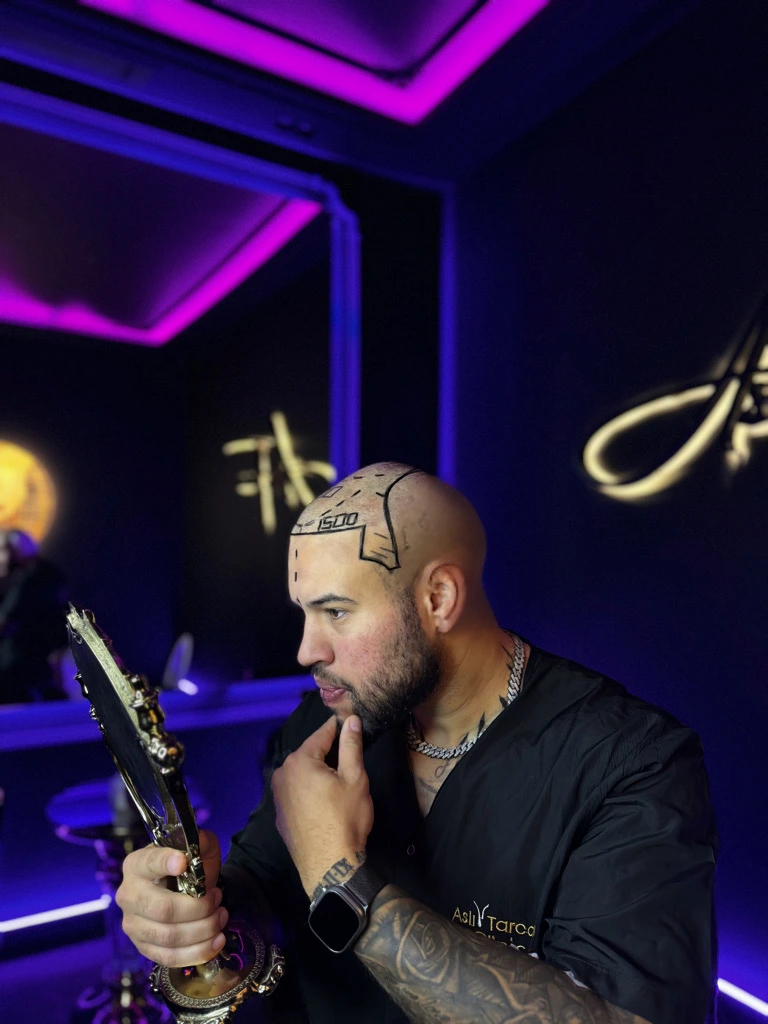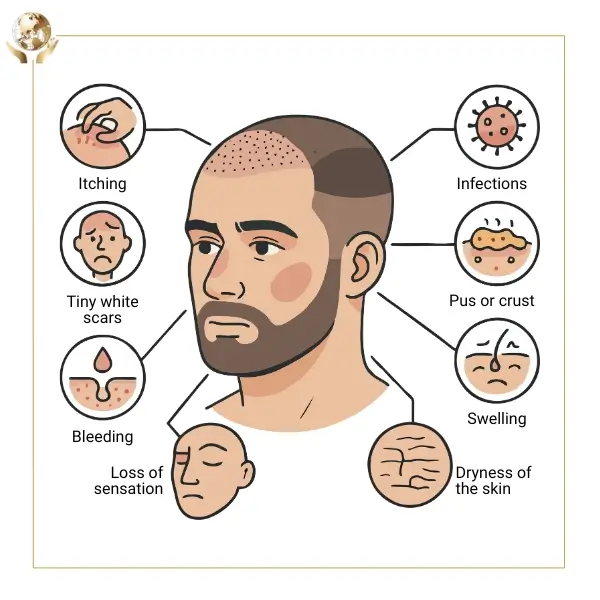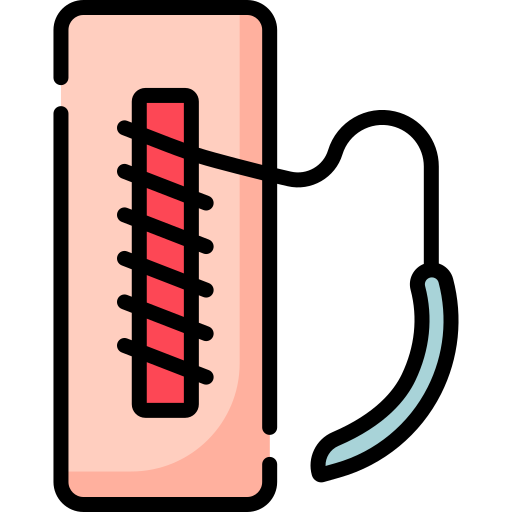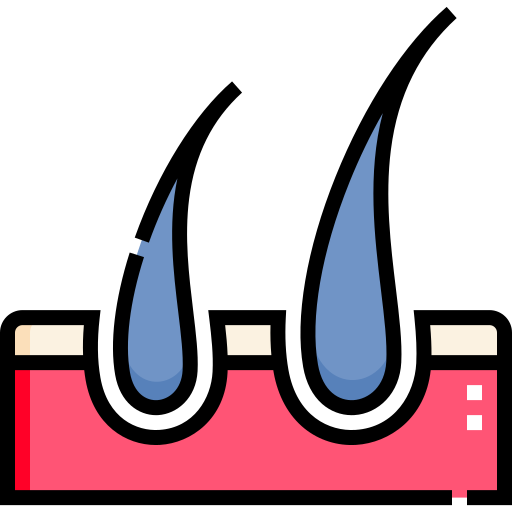FUE Hair Transplant Turkey




According to the research article “Androgenetic Alopecia” published in the National Library of Medicine, this common form of hair loss affects almost 50% of men and women. Losing hair can deeply impact one’s self-esteem and confidence, as they are an essential part of their identity and contribute to how they are perceived by others.
If you are experiencing hair loss or worried about going bald, a hair transplant is what you may need. Of the two main types FUT Vs FUE, FUE hair transplant is the best option as it offers a painless experience with the high potential of permanent natural hair growth.
However, if its higher costs in your home country concern you, worry not! Visit our clinic, Aslı Tarcan, for a significantly more budget-friendly FUE hair transplant in Turkey. Restore your confidence without breaking the bank!

GET FREE HAIR ANALYSIS
Fill out the form below in order to receive a free, no-obligation consultation to get the information you need to help you make the right choices.
What is
FUE Hair Transplant
Follicular Unit Extraction (FUE) is a modern hair transplantation technique that involves the extraction of individual hair follicles directly from the donor area (back or temple region of the head)
This is done by using micro-punch tools. The follicles are then implanted in the balding or thinning regions of the patient’s scalp to promote new hair growth

Benefits of
FUE Hair Transplant in Trukey
There are many advantages of FUE hair transplant over the traditional methods like FUT which are preferred by only 31.5% of patients. These include:
Minimally Invasive
The micro FUE hair transplant in Turkey does not require large incisions or stitches, avoiding visible linear scarring. This also enables patients to enjoy shorter hairstyles confidently.
Precise Extraction
FUE uses a micro-punch tool (0.7–1.0 mm) to extract hair with minimal tissue damage, ensuring the donor area remains healthy.
Natural Growth
Grafts are implanted in patterns that follow natural hairlines to avoid the hair plug look . About 50% growth is seen in 3–4 months and full growth in 1–2 years.
Lower Risk of Complications
With no large incisions or stitches, risks like infections or nerve damage are reduced. Small punctures heal in 7–10 days with minimal discomfort.
Harvesting in Non-Scalp Areas
FUE allows using donor hair from areas like the beard or chest, unlike FUT, which requires skin strip removal and leaves linear scars.
Different Types of Hair Loss
It is crucial to understand different types of hair loss to determine the most effective treatment option for your condition. Let’s have a look at some of them:
Androgenic Alopecia
- Male-Pattern Baldness: Receding hairline and thinning of the crown.
- Female-Pattern Hair Loss: General thinning of hair across the scalp.
Alopecia Areata: An autoimmune disorder that results in sudden, patchy hair loss
Telogen Effluvium: Refers to diffuse thinning of hair where a large number of hair follicles enter the telogen (resting) phase of the growth cycle
Traction Alopecia: Caused by persistent pulling or tension on the hair, mostly because of tight hairstyles or extensions
Cicatricial Alopecia: A rare form of hair loss which occurs as a result of inflammation that destroys hair follicles
Frontal Fibrosing Alopecia: A type of Cicatricial Alopecia where progressive hair loss occurs along the frontal hairline and the scalp’s temporal regions.

7 Factors that Contribute to Hair Fall
Hair loss might occur due to genetics, hormones, or autoimmune disorders. Irrespective of the reason, understanding the root cause helps you identify if FUE hair transplant is the best choice or you need any other approach.
Here are some of the major reasons behind hair fall:

Genetics
When someone is genetically disposed to hair fall, their hair follicles become increasingly sensitive to dihydrotestosterone (DHT). As a result, miniaturization occurs which leads to shortened growth cycles.
Hormonal Imbalances
Hormonal change is another major reason for hair loss, especially in conditions that involve increased androgens (male hormones), like Polycystic Ovary Syndrome and Congenital Adrenal Hyperplasia.
Postpartum Hair Fall
Hair loss also occurs during postpartum. While a woman is pregnant, the higher estrogen levels keep hair in their anagen (growth) phase, which results in thicker hair. However, after childbirth, it drops, which causes many hairs to enter the telogen phase and cause increased shedding of hair.
Autoimmune Disorders
Multiple autoimmune conditions like Lupus Erythematosus, Lichen Planopilaris, and Hashimoto’s Thyroiditis also lead to uncontrollable thinning of hair. In such conditions, the body’s immune system starts attacking the cells within hair follicles as if they were foreign invaders. This disrupts the normal cycle of hair growth.
Nutritional Deficiencies
If your nutrient intake is not adequate, especially iron, vitamin D, zinc, and protein, you will more likely face increased shedding of hair. For instance, in people with iron deficiency anemia, the impaired hemoglobin production reduces oxygen supply to hair follicles, compromising their growth.
Medical Treatments and Medications
Patients who go through chemotherapy or take certain medications like beta-blockers and anticoagulants are more likely to face hair fall.
It is because chemotherapy drugs can target rapidly dividing hair follicles and stop their growth. Similarly, the other medicines contribute to hair loss by disrupting normal hair follicle activity.
Infections and Aging
Scalp infections, like Tinea Capitis (ringworm) and Folliculitis (infection of hair follicles) can also cause temporary and localized hair fall.
Similarly, it is also a part of the natural aging process. As a person’s age increases, their hair growth slows, follicles shrink, and the hair cycle becomes shorter. Consequently, their hair starts getting thinner and less pigmented over time.
Ideal Candidates For FUE Hair Transplant Turkey
Determining if you are an ideal candidate for an FUE transplant Turkey requires considering a range of characteristics like:

How the FUE Hair Transplant Process Works
Usually, a single session of FUE hair transplant is enough for satisfactory results. However, if you need an extensive hair transplantation (over 5000 grafts), you might be required to attend multiple sessions. The exact number of sessions precisely depends on your extent of baldness, donor area availability, and the desired density.
In general, the procedure goes as follows:
Book Virtual Free Consultation
Aslı Tarcan, we offer free e-consults with our patient consultants, to allow you to discuss your expectations and desired outcomes in person.
Post-Op Care
Your hair restoration specialist will provide certain postoperative care instructions that you must follow for a smooth recovery of minimally invasive hair transplant.
These include:
Note: The newly transplanted hairs may fall out within the first 2 to 4 weeks of the procedure, which is a normal part of the shedding phase. It is known as shock loss.


Side Effects of FUE Hair Transplant
Although the stripless hair transplant in Turkey is considered minimally invasive, it can still come with certain side effects that you should be aware of. These include:
How much is the Cost of FUE in Turkey
When going for FUE hair transplantation in Turkey, your first concern would likely be its cost. Fortunately, Turkey is one of those few countries that offer highly reasonable rates for the procedure without any compromise on the quality of care. Its prices are much lower than in other regions like the UK, USA, France, Germany, Spain, etc.
Let’s have a look at the FUE hair transplant cost in Turkey and other countries:
Country
FUE Hair Transplant Cost
Turkey
Starts from $3,000
UK
Up to $15,000
France
Starts from $9,930
USA
Starts from $8,000
Germany
Up to $8,930
Spain
Starts from $4,700
This is just an estimate as the full cost depends upon multiple factors, including:
Book Virtual Free Consultation
Aslı Tarcan, we offer free e-consults with our patient consultants, to allow you to discuss your expectations and desired outcomes in person.
5 Common Techniques Used For FUE Hair Transplant
Besides the manual FUE hair transplant, as discussed above, there are various other techniques used for the procedures offered at Aslı Tarcan, the best FUE hair transplant clinic in Turkey, such as:

Motorized FUE
During motorized FUE hair transplant, the punch tool is motor-driven, which reduces the time required for graft harvesting. It can be used to transplant 3000-5000 grafts in a single session. The graft survival rate is almost 85% to 95%, a bit higher than that of manual FUE, i.e. 90%.

Robotic FUE (ARTAS System)
The ARTAS robotic system, based on advanced artificial intelligence, scans the donor area and determines optimal grafts to harvest based on health and angle. As a result, uniform extractions are created, which preserves the aesthetics of the donor site. It is ideal for transplanting 2000 to 4000 grafts in a single surgery, and the survival rates of grafts are 92% to 100%.

Sapphire FUE
The best sapphire FUE hair transplant in Turkey replaces traditional steel with sapphire blades, which allows for smaller and finer incisions. It reduces the risks of tissue trauma and scarring. Furthermore, the healing time is also reduced by 20% to 30%.

Direct Hair Implantation (DHI)
DHI is a variation of FUE where grafts are implanted instantly after extraction, using a special tool known as Choi Implanter Pen. The reduction in time that follicles are exposed to external conditions enhances their survival rates significantly.

Long Hair FUE
Long Hair FUE refers to a type of FUE in which extracted hair follicles are transplanted without shaving or trimming the donor area. It allows patients to maintain their existing hairstyle throughout the procedure and during recovery.
What are Platelet-Rich Plasma Injections
Platelet-rich plasma (PRP) injection is a part of a hybrid therapy, often recommended to patients undergoing FUE hair transplant. It is not necessary but a good option as it can stimulate the functioning of hair follicles using growth factors and proteins naturally found in your blood.
PRP injections can be administered around the newly transplanted grafts on both donor and recipient areas, typically on the same day as your surgery. Following it, four more sessions would be required with a space of 4 to 6 weeks apart.
According to a study published in Journal of Cutaneous and Aesthetic Surgery titled “Outcome of Intra-operative Injected Platelet-rich Plasma Therapy During Follicular Unit Extraction Hair Transplant” states that individuals having dormant hair follicles may experience less effective results from hair transplant. However, they can benefit from plasma therapy as it leads to growth of 75% or more of transplanted hair.
FUE vs. FUT Hair Transplant
Follicular unit transplantation (FUT) also known as strip harvesting is another method of hair transplant, however, its usage has declined due to noticeable linear scarring it leaves at the donor site. The table explores the difference between FUE and FUT, so you can make an informed decision about which procedure would be the best for your needs.
| Aspect | FUE (follicular unit extraction) | FUT (follicular unit transplantation) |
|---|---|---|
| Procedure | Individual hair follicles are extracted directly from the donor area. | A strip of scalp is removed from the donor area and then follicles are extracted from it for implantation on the recipient region. |
| Scarring | Tiny, dot-like scars, not noticeable | Visible linear scar |
| Recovery time | Faster recovery, usually 5 to 7 days | Slightly longer duration is required for healing (almost 2 weeks) |
| Pain and discomfort | Less discomfort after procedure | More pain and discomfort due to a large incision |
| Risk of complications | Lower | Slightly higher |
| Number of harvested grafts | 1500 | 3000+ in a single session |

Book Virtual Free Consultation
Aslı Tarcan, we offer free e-consults with our patient consultants, to allow you to discuss your expectations and desired outcomes in person.
